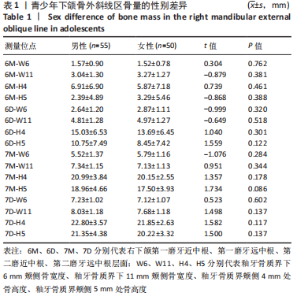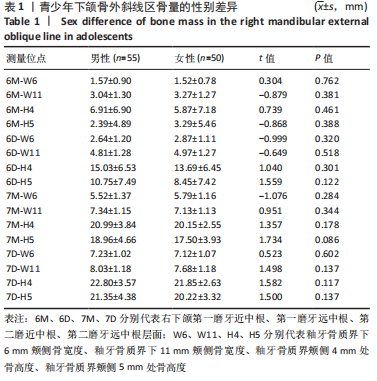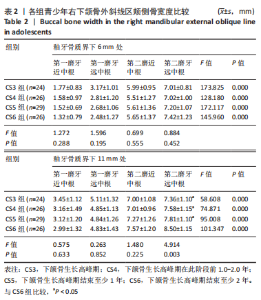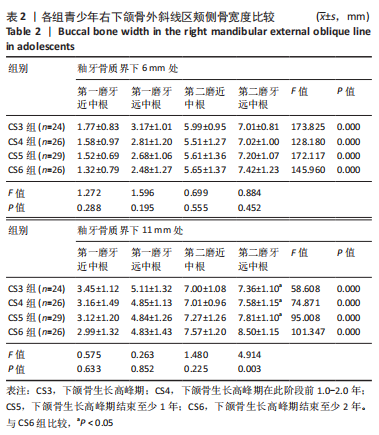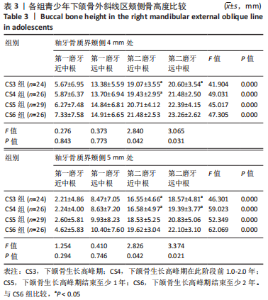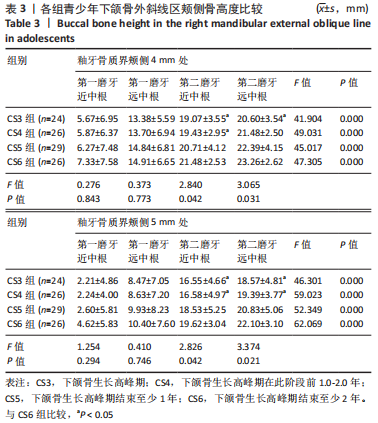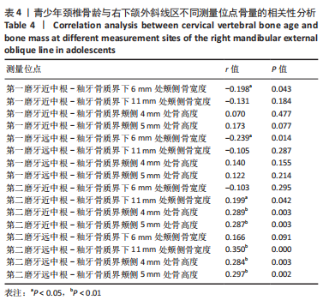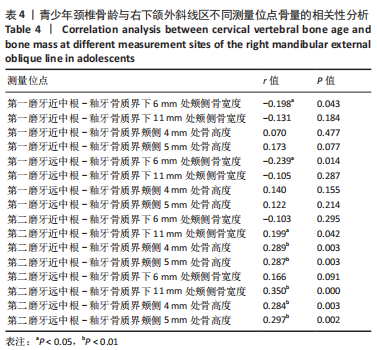[1] 吴瑶,徐依山,李真真,等.不同骨面型下颌颊棚区骨量的特征分析[J].口腔医学研究,2022,38(4):362-366.
[2] 田青鹭,赵志河.微型种植体在口腔正畸中稳定性的研究进展[J].国际口腔医学杂志,2020,47(2):212-218.
[3] CHANG HP, TSENG YC. Miniscrew implant applications in contemporary orthodontics. Kaohsiung J Med Sci. 2014;30(3):111-115.
[4] 吴晓雪,刘海波,罗晨,等.下牙列整体远移时不同牵引钩对牙齿移动影响的有限元分析[J].医用生物力学,2022,37(4):663-668.
[5] LIU H, WU X, TAN J, et al. Safe regions of miniscrew implantation for distalization of mandibular dentition with CBCT. Prog Orthod. 2019; 20(1):45.
[6] RAMIREZ-OSSA DM, ESCOBAR-CORREA N, RAMIREZ-BUSTAMANTE MA, et al. An Umbrella Review of the Effectiveness of Temporary Anchorage Devices and the Factors That Contribute to Their Success or Failure. J Evid Based Dent Pract. 2020;20(2):101402.
[7] YU WP, TSAI MT, YU JH, et al. Bone quality affects stability of orthodontic miniscrews. Sci Rep. 2022;12(1):2849.
[8] NUCERA R, LO GIUDICE A, BELLOCCHIO AM, et al. Bone and cortical bone thickness of mandibular buccal shelf for mini-screw insertion in adults. Angle Orthod. 2017;87(5):745-751.
[9] VARGAS EOA, DE LIMA RL, NOJIMA LI. Mandibular buccal shelf and infrazygomatic crest thicknesses in patients with different vertical facial heights. Am J Orthod Dentofacial Orthop. 2020;158(3):349-356.
[10] ALELUIA RB, DUPLAT CB, CRUSOÉ REBELLO I, et al. Assessment of the mandibular buccal shelf for orthodontic anchorage: Influence of side, gender and skeletal patterns. Orthod Craniofac Res. 2021;24(S1):83-91.
[11] 陈莉莉.骨龄在评估颅面生长发育中的应用及其影响因素[J].口腔医学,2016,36(5):385-389.
[12] FRANCHI L, BACCETTI T, MCNAMARA JA. Mandibular growth as related to cervical vertebral maturation and body height. Am J Orthod Dentofacial Orthop. 2000;118(3):335-340.
[13] MCNAMARA JA, FRANCHI L. The cervical vertebral maturation method: A user’s guide. Angle Orthod. 2018;88(2):133-143.
[14] 刘彩凤,蔡留意,张月兰,等.下颌颊棚区微种植体植入区域的锥形束CT研究[J].安徽医科大学学报,2017,52(2):298-300.
[15] CHANG C, LIU SS, ROBERTS WE. Primary failure rate for 1680 extra-alveolar mandibular buccal shelf mini-screws placed in movable mucosa or attached gingiva. Angle Orthod. 2015;85(6):905-910.
[16] CHANG C, LIN J, YEH HY. Extra-Alveolar Bone Screws for Conservative Correction of Severe Malocclusion Without Extractions or Orthognathic Surgery. Curr Osteoporos Rep. 2018;16(4):387-394.
[17] 叶俊杰.成人下颌颊棚区及磨牙后区骨骼特征的CBCT研究[D].南京:南京医科大学,2021.
[18] WANG Y, SUN J, SHI Y, et al. Buccal bone thickness of posterior mandible for microscrews implantation in molar distalization. Ann Anat. 2022;244:151993.
[19] CERICATO GO, BITTENCOURT MA, PARANHOS LR. Validity of the assessment method of skeletal maturation by cervical vertebrae: a systematic review and meta-analysis. Dentomaxillofac Radiol. 2015; 44(4):20140270.
[20] 房笑.2053例错(牙合)畸形患者就诊情况临床调查分析[D].芜湖:皖南医学院,2020.
[21] CHEN K, CAO Y. Class III malocclusion treated with distalization of the mandibular dentition with miniscrew anchorage: A 2-year follow-up. Am J Orthod Dentofacial Orthop. 2015;148(6):1043-1053.
[22] ESCOBAR-CORREA N, RAMÍREZ-BUSTAMANTE MA, SÁNCHEZ-URIBE LA, et al. Evaluation of mandibular buccal shelf characteristics in the Colombian population: A cone-beam computed tomography study. Korean J Orthod. 2021;51(1):23-31.
[23] ELSHEBINY T, PALOMO JM, BAUMGAERTEL S. Anatomic assessment of the mandibular buccal shelf for miniscrew insertion in white patients. Am J Orthod Dentofacial Orthop. 2018;153(4):505-511.
[24] SREENIVASAGAN S, SIVAKUMAR A. CBCT comparison of buccal shelf bone thickness in adult Dravidian population at various sites, depths and angulation – A retrospective study. Int Orthod. 2021;19(3):471-479.
[25] RAMÍREZ-VELÁSQUEZ M, VILORIA-ÁVILA TJ, RODRÍGUEZ DA, et al. Maturation of cervical vertebrae and chronological age in children and adolescents. Acta Odontol Latinoam. 2018;31(3):125-130.
[26] 黎静文,周力.颈椎成熟法评估下颌骨骨龄的研究进展[J].国际口腔医学杂志,2022,49(3):337-342.
[27] CHANDRASEKAR R, CHANDRASEKHAR S, SUNDARI K, et al. Development and validation of a formula for objective assessment of cervical vertebral bone age. Prog Orthod. 2020;21(1):38.
[28] ARANGO E, PLAZA-RUÍZ SP, BARRERO I, et al. Age differences in relation to bone thickness and length of the zygomatic process of the maxilla, infrazygomatic crest, and buccal shelf area. Am J Orthod Dentofacial Orthop. 2022;161(4):510-518.
[29] FARNSWORTH D, ROSSOUW PE, CEEN RF, et al. Cortical bone thickness at common miniscrew implant placement sites. Am J Orthod Dentofacial Orthop. 2011;139(4):495-503.
[30] GANDHI V, UPADHYAY M, TADINADA A, et al. Variability associated with mandibular buccal shelf area width and height in subjects with different growth pattern, sex, and growth status. Am J Orthod Dentofacial Orthop. 2021;159(1):59-70.
[31] ZHANG J, WANG X, LIN J. Longitudinal Quantitation of Tooth Displacement in Chinese Adolescents with Normal Occlusion. Curr Med Sci. 2019;39(2):317-324.
[32] 赵力如.骨性Ⅲ类错(牙合)畸形成人下颌颊棚区微种植体植入安全性探讨[D].石家庄:河北医科大学,2019.
[33] CHUN YS, LIM WH. Bone density at interradicular sites: implications for orthodontic mini-implant placement. Orthod Craniofac Res. 2009; 12(1):25-32.
[34] 吴也可,郜然然,左渝陵,等.影响微种植体正畸治疗成功率的因素[J].中国组织工程研究,2020,24(4):538-543.
[35] 金海茹.正畸微种植钉成功率及相关风险因素的系统评价[D].济南:山东大学,2020.
[36] HOSEIN YK, SMITH A, DUNNING CE, et al. Insertion Torques of Self-Drilling Mini-Implants in Simulated Mandibular Bone: Assessment of Potential for Implant Fracture. Int J Oral Maxillofac Implants. 2016; 31(3):e57-e64.
|
